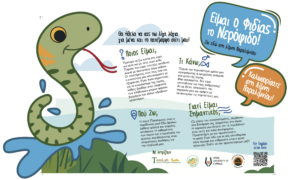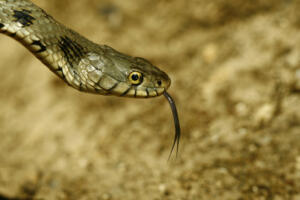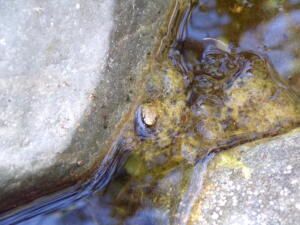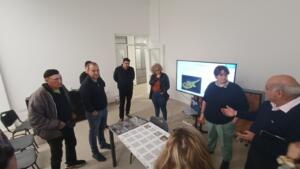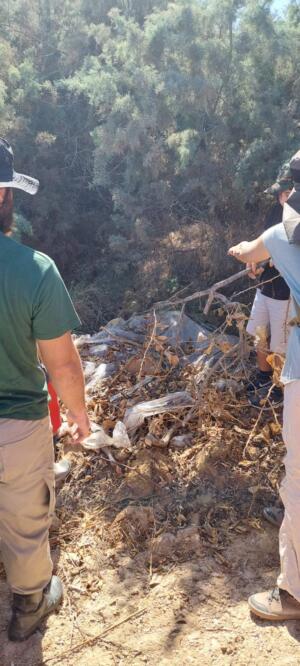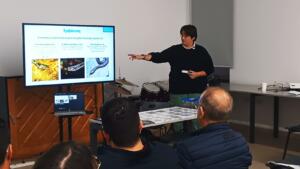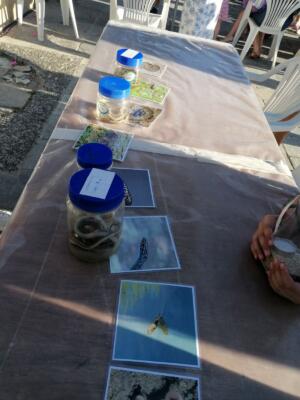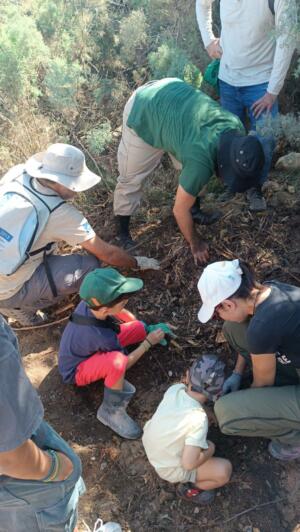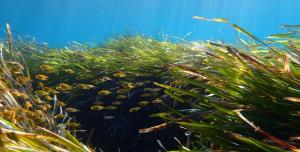
Grants
Biodiversity Conservation
ENGAGING YOUTH IN ENDANGERED REPTILE SPECIES CONSERVATION
€7,670 awarded
Project duration: 02/2024 – 11/2024
Status: Complete
The challenge
Despite being a priority species protected by EU legislation and Cyprus law, essential information on the population dynamics and structure of the Cyprus grass snake (Natrix natrix cypriaca) is lacking, which hinders targeted conservation efforts. Recent publications, including the LIFE IP Physis Action Plan, the last three national reports under Article 17 of Directive 92/43/EC, and the limited research conducted over the past 15 years, all emphasize the urgent need for further study (Blosat 2005; 2008; Baier and Wiedl 2010; LIFE ICOSTACY 2010-2014; Zotos et al., 2021, 2022; Stamatiou, 2022). The Paralimni population is at risk due to habitat fragmentation caused by urbanization, agricultural activity, hunting, and tourism (Papatheodoulou et al., 2015). These threats are exacerbated by ophidiophobia – the fear of snakes – leading to the extermination of the species out of fear and lack of education (Blosat, 2005).
The solution
This project aims to address these problems through a grassroots approach. Throughout its course, trainings and workshops will be organised, educational material will be created and “train the trainer” sessions to engage the local community in citizen science and data collection will be conducted. By promoting citizen science and initiating a volunteer monitoring scheme amongst the youth of the Paralimni and Sotira communities, the project will help to develop a greater understanding of the species’ population and will address the identified threats and pressures. The results of the project will reinforce research and guide the conservation actions to be implemented as part of LIFE IP Physis.
Project’s deliverables
- Establish communication with locals through various community groups to organize educational activities.
- Conduct workshops using citizen science to educate locals on species and monitoring techniques.
- Receive training on herpetofauna conservation through citizen science from RAVON staff.
- Create awareness material on the Cyprus grass snake for secondary education and young adults.
- Establish a volunteer group to self-organize and monitor the species long-term with support from the project’s scientific team. They will implement a “training the trainers” approach to identify and train community members to become trainers themselves, investing in a cascading effect.
Project Updates
- 2-Day workshop schedule on Cyprus Grass Snake conservation at Sotera Community on 13 & 14 April 2024
References
- Baier, F., & Wiedl, H.-J. (2010). The re-evaluated conservation status of the mountain populations of the highly endangered Cyprus grass snake, Natrix natrix cypriaca (Hecht, 1930), with miscellaneous natural history notes. Salamandra, 46, 16–23.
- Blosat, B. (2005). Establishing a captive-breeding program for the endangered Cypriot GrassSnake (Natrix natrix cypriaca) – Final report.
- Blosat, B. (2008). Population status, threats and protection of the Grass snake Natrix natrix cypriaca (Hecht, 1930) on Cyprus. Mertensiella, 17, 246–271.
- Papatheodoulou, A., Sergides, L., Michael, K., Emirzade, T., Victora, M., Michael, Α., & Economou, N. (2015). Census of the island wetlands of Cyprus. Terra Cypria.
- Stamatiou, M. (2022). Κατανομή του είδους Natrix natrix cypriaca στη οροσειρά του Τροόδους. Open University of Cyprus.
- Zotos, S., Stamatiou, M., & Vogiatzakis, I. N. (2022). Elusive species distribution modelling: The case of Natrix natrix cypriaca. Ecological Informatics, 71, 101758.
- Zotos, S., Stamatiou, M., Naziri, A., Meletiou, S., Demosthenous, S., Perikleous, K., Erotokritou, E., Xenophontos, M., Zavrou, D., Michael, K., & Sergides, L. (2021). New Evidence on the Distribution of the Highly Endangered Natrix natrix cypriaca and Implications for Its Conservation. Animals, 11, 1077.
- ΠΡΟΓΡΑΜΜΑ LIFE09 NAT/CY/00247-ICOSTACY. (2015). ICOSTACY. http://www.moa.gov.cy/moa/icostacy/icostacy.nsf/index_gr/index_gr?opendocument 8.2.2
A bit about the organization
The Terrestrial Ecosystems Management Lab (TemLab) at Open University of Cyprus was founded in 2011 to support the “Environmental Conservation and Management” Master’s program. TemLab consists of experts in various environmental fields and is actively involved in European and local projects focusing on island and mountainous Mediterranean ecosystems. The Lab has experience in both small- and large-scale projects, field work, and education.

